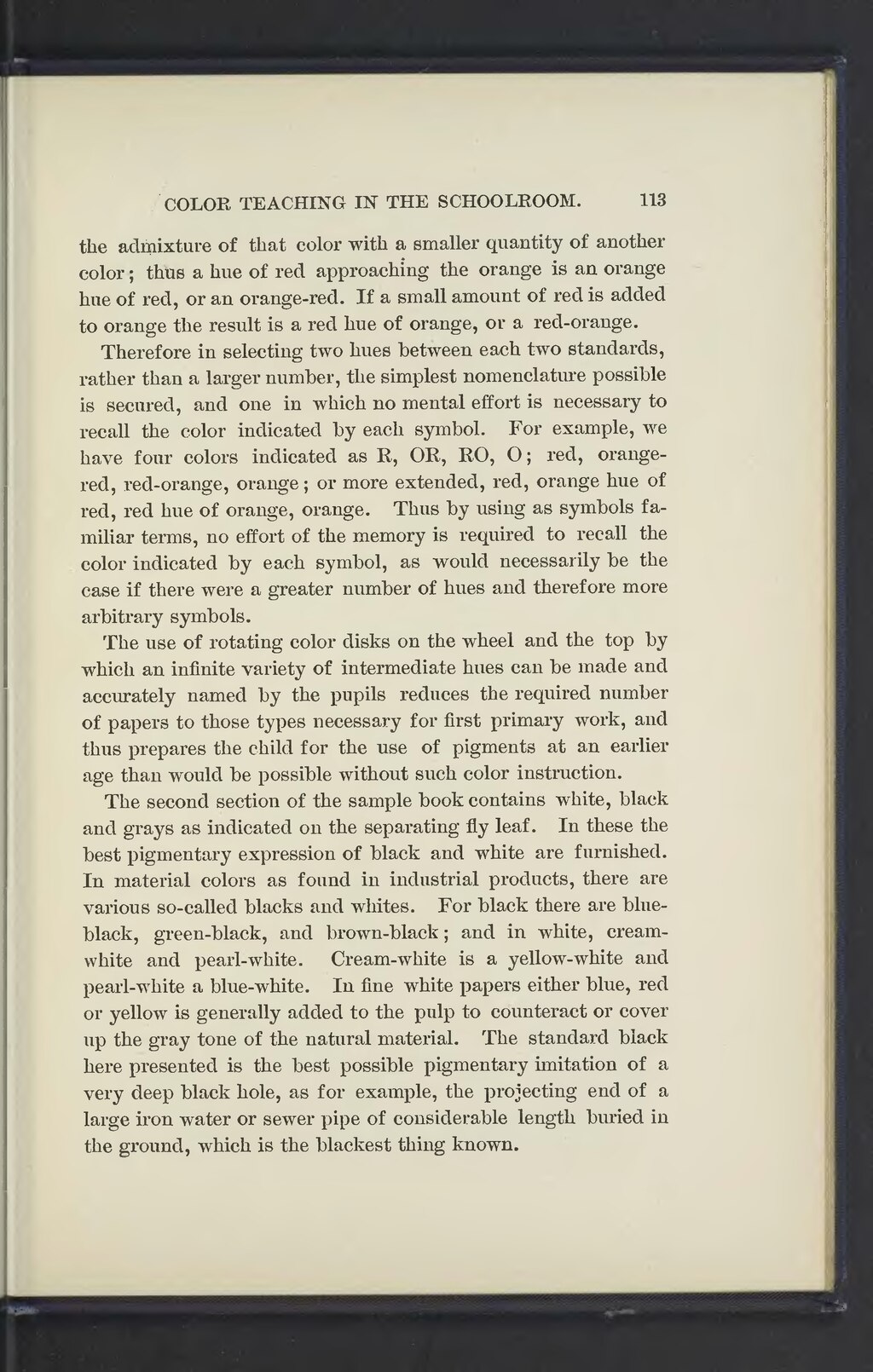the admixture of that color with a smaller quantity of another color; thus a hue of red approaching the orange is an orange hue of red, or an orange-red. If a small amount of red is added to orange the result is a red hue of orange, or a red-orange.
Therefore in selecting two hues between each two standards, rather than a larger number, the simplest nomenclature possible is secured, and one in which no mental effort is necessary to recall the color indicated by each symbol. For example, we have four colors indicated as R, OR, RO, O; red, orangered, red-orange, orange; or more extended, red, orange hue of red, red hue of orange, orange. Thus by using as symbols familiar terms, no effort of the memory is required to recall the color indicated by each symbol, as would necessarily be the case if there were a greater number of hues and therefore more arbitrary symbols.
The use of rotating color disks on the wheel and the top by which an infinite variety of intermediate hues can be made and accurately named by the pupils reduces the required number of papers to those types necessary for first primary work, and thus prepares the child for the use of pigments at an earlier age than would be possible without such color instruction.
The second section of the sample book contains white, black and grays as indicated on the separating fly leaf. In these the best pigmentary expression of black and white are furnished. In material colors as found in industrial products, there are various so-called blacks and whites. For black there are blueblack, green-black, and brown-black; and in white, cream-white and pearl-white. Cream- white is a yellow- white and pearl-white a blue-white. In fine white papers either blue, red or yellow is generally added to the pulp to counteract or cover up the gray tone of the natural material. The standard black here presented is the best possible pigmentary imitation of a very deep black hole, as for example, the projecting end of a large iron water or sewer pipe of considerable length buried in the ground, which is the blackest thing known.
